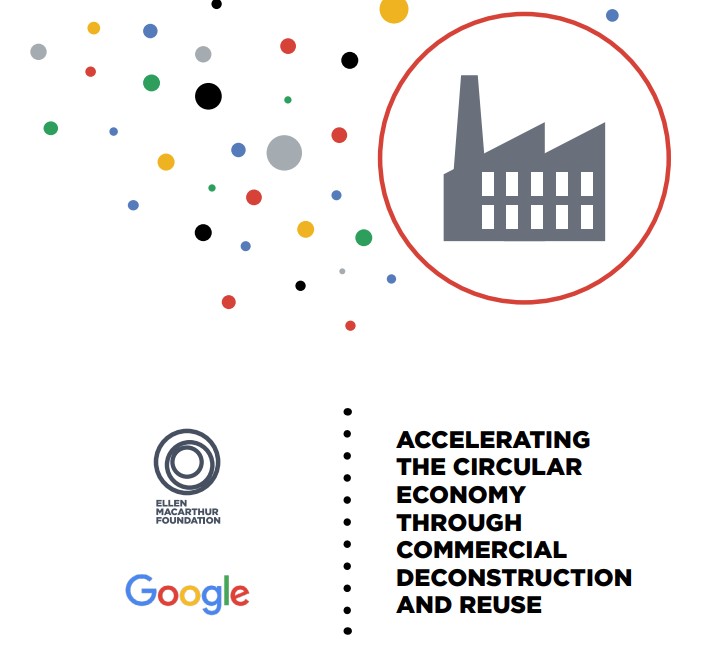Wandering the web the other day, it occurred to me that the continuous improvement process “5 whys” could be a powerful tool for sustainability. I was watching a LinkedIn conversation on the challenges of consumption, and there didn’t seem to be a whole lot of depth to the conversation.

Root cause analysis and the “5 Whys”
No dentistry here (sorry, but part of my brain went to “root canal” and this is far less painful). “5 whys” comes out of the continuous improvement practices developed in Japanese manufacturing and adapted into Lean Thinking. It’s a process for discovering the root causes behind problems – to repeatedly ask “why did the process fail?”
5 whys is a process of repeatedly examine the chain of causality until we get to the root cause of the problem – a place where we can actually fix it. The root cause of a problem often lies outside what we expect – it’s hidden behind what we think we know about how things work. (Recent developments in neuro-biology are proving that what humans perceive is heavily influenced by our past experience – so difficult problems need tools that help us challenge our assumptions and look beyond the logic traps of our habitual thinking. )
If you haven’t asked “why” five times, you probably haven’t got to the root cause…
The five of 5 whys isn’t a a fixed rule, but five iterations of asking why is generally sufficient to get to a root cause. More importantly – if you haven’t asked “why” five times, you probably haven’t got to the root cause. If you haven’t got to the root cause then you’re treating a symptom rather than a problem and you can expect the problem to come back. Root causes of problems are processes that are not working well, or don’t actually exist.
“5 Whys” and the consumption process (# 1)
So let’s practice 5 whys on consumption. Let’s put the focus on the process of consumption – because that’s what it really is. Consumers are people who buy products for a purpose. We buy phones to communicate and cars for transport (ok, and sometimes for image too). Not many people want tonnes of steel, plastic and rubber in their driveway for the sake of the materials – they want to travel conveniently and comfortably.
Remember, to get the most out of this our why is “why did the process fail?” If you find yourself citing a generic “issue” like “no time”, “no money” or “bad management” you’ve slipped away from root cause analysis and snuck back into playing the blame game.
We could start with the problem statement “consumption is ruining our eco-system”.
- Why is our consumption process damaging our eco-system? Because it consumes enormous amounts of finite resources and emits lots of damaging wastes…
- Why does our consumption process consume enormous amounts of finite resources and emit lots of damaging wastes? Because our production processes aren’t designed to be safe and renewable…
- Why aren’t our production processes designed to be renewable? a) they were designed a long time ago when we didn’t think it mattered; and b) we think it’s too expensive to change them.
- Why do we think it’s too expensive to change our production processes? Because we’ve always treated environment as an after-the-fact compliance expense imposed by governments.
- Why do we treat environment as an after-the-fact compliance expense? Because we always have… Because we used to think that our eco-system had infinite capacity to supply resources and absorb wastes…
OK – now we’re somewhere where we can make a difference – somewhere we can make a serious impact on resource consumption, permanently. Regenerative entrepreneurs have been proving smart design of products-of-service and closed material loops are profitable since the 1990s. Smart, strategic, eco-effective solutions increase profits.
“5 Whys” and the consumption process (# 2)
Or let’s try it in a different direction on the problem statement “consumption is ruining our eco-system”.
- Why is our consumption process damaging our eco-system? Because consumers buy “too many” products…
- Why do consumers buy lots of products? Because they’re greedy and ignorant…
- Why do people act in greedy ways? Excluding psychopaths, people act in selfish/greedy ways when they’re living in chronic anxiety and uncertainty (increasing evidence from ontology, pychiatry and other fields shows that when people feel safe and positive they think strategically and act compassionately).
- Why do people feel scared and hopeless? Because they don’t have tools to cope with the rapid change and high levels of uncertainty prevalent today…
- Why don’t people have tools to enable them to manage uncertainty and anxiety? Because our systematic knowledge base in this area is relatively new and they haven’t been widely taught (yet).
Here we are again, getting to a root cause where we have the potential to make a real, permanent difference. Spreading the tools that have been developed over the past 40 years to enable people to manage their moods and emotions more effectively and positively.
Over to you
So here’s a different way for you to explore how to generate a sustainable future. Next time you find yourself complaining about something (especially if it involves blaming some group or another) stop for a minute. If something’s going wrong, it’s a process. Get out a pencil and paper, open your wordprocessor and start asking “why?” “why is the process failing?”
Do your own root cause analysis and see if you can find a more pro-active, positive action to take than blaming “them out there”.










